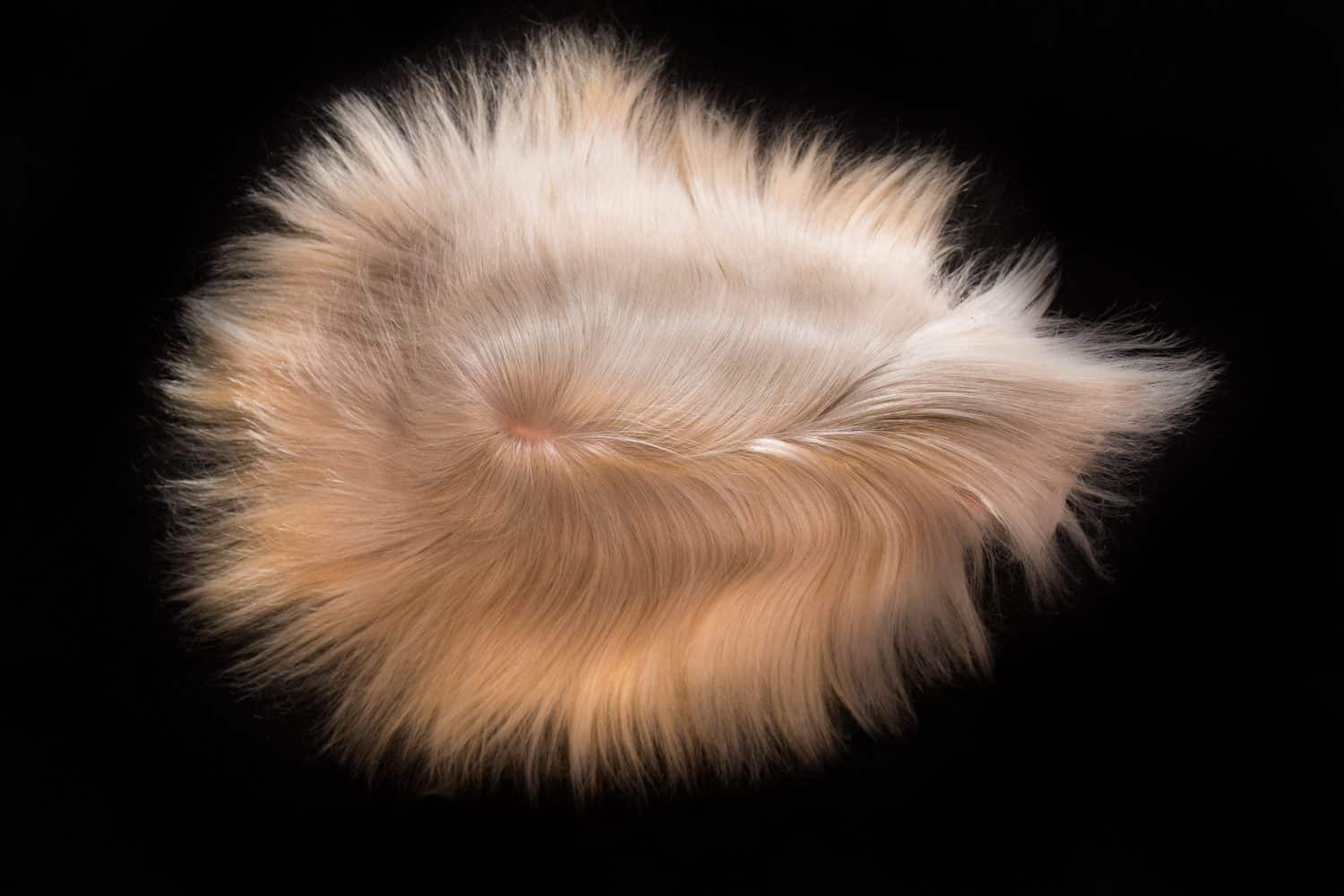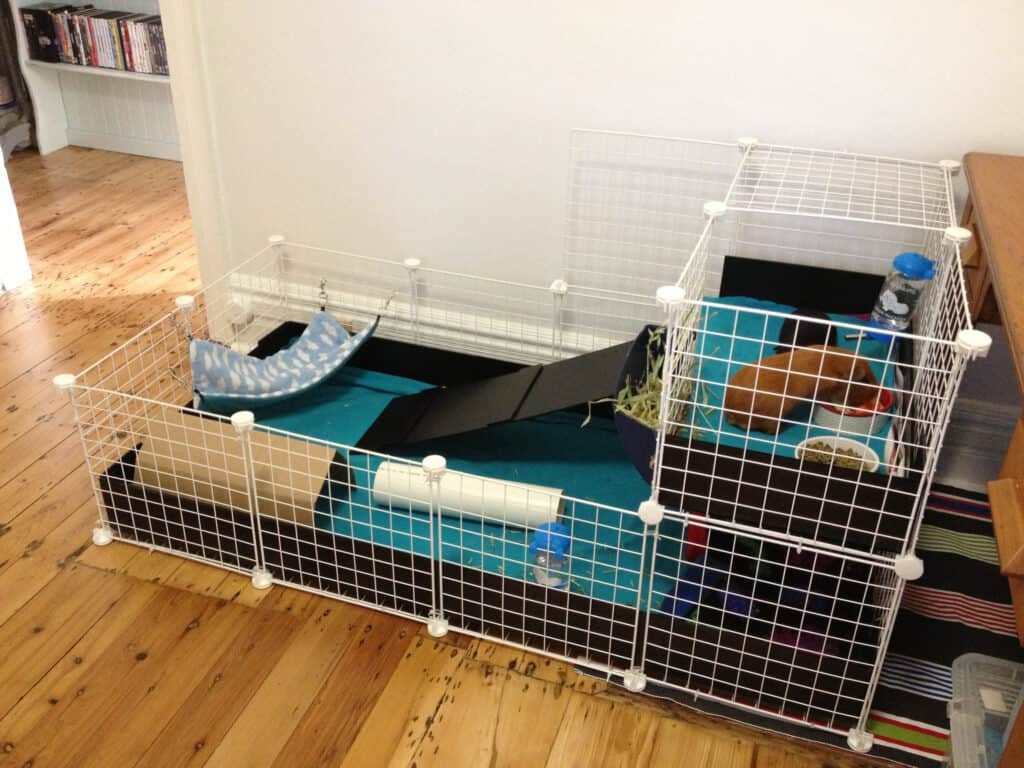The satin guinea pig has hollow hair follicles that make their fur appear shiny. Unfortunately, the satin gene can also cause a disease called satin syndrome, which is incurable and has a very poor prognosis.
In this article, we’ll discuss everything there is to know about satin guinea pigs, from satin syndrome to care advice.
#1: What is Satin Syndrome in Guinea Pigs?

Satin guinea pigs have shiny fur caused by hollow hair follicles.
©EBPhoto/Shutterstock.com
Satin syndrome in guinea pigs is caused by having the satin gene, which is recessive. The most common symptom is osteodystrophy, which causes a guinea pig’s bones to become brittle due to the inability to absorb calcium.
Symptoms include pain, gait changes, lifting one leg in the air, weight loss, difficulty eating due to a weakened jaw or teeth, increased thirst and urination, sunken eyes, and tiredness.
There is no cure for satin syndrome, so the focus is on allowing the guinea pig to live their lives as comfortably as possible. Once symptoms present, the guinea pig may have a few months to two years left to live.
#2: How are Satin Guinea Pigs Different from Other Guinea Pigs?
The care and behavior of satin guinea pigs are the same as that of other guinea pigs. The main difference is in their coat, which has hollow hair follicles that are shiny.
Though many people adore the shiny look of these guinea pigs, breeding for it is unethical. While not all guinea pigs with the satin gene develop satin syndrome, not enough is known about the disease to control it when breeding unless breeders avoid breeding guinea pigs with the gene altogether.
#3: How to Care for a Satin Guinea Pig

©Phil Whitehouse / flickr – License
Since they’re herd animals, you must always keep at least two guinea pigs. Even “loner” guinea pigs benefit from living in a cage near another pair or group.
The minimum cage size for one to two guinea pigs is 7.5 square feet, but 10.5 square feet or larger is highly recommended. Males often require more space than females, and the minimum is often insufficient.
Keep at least one water bottle and one hide per guinea pig to avoid territorial disputes. Use guinea pig-safe bedding such as fleece, chenille bath mats, or disposable paper bedding.
Cleaning
Your satin guinea pig will be pretty messy, as all guinea pigs are! Spot-clean the cage once daily and do a full clean at least once to twice a week.
Avoid using scented products around your guinea pig. This includes bedding, cleaners, candles, essential oils, and other fragrances.
If you keep their cage clean, your guinea pig should rarely–if ever–need a bath. They’re self-grooming like cats!
Feeding
Your satin guinea pig will need constant access to grass hay. The most popular are timothy hay and orchard grass. This is best given in a large pile so they can access it quickly and get enrichment through burrowing.
Feed a variety of dark, leafy greens daily. Make sure to provide enough vitamin C in the diet, as guinea pigs can get scurvy just like people. Avoid the supplements for their water, as they disintegrate in the sunlight and leave a bad taste behind.
A quality guinea pig pellet, such as those made by Oxbow, should be given in small amounts to ensure your guinea pig gets all the nutrients they need to thrive.
#5: How to Perform At-Home Health Checks
Illness progresses very quickly in guinea pigs, so monthly at-home health checks are necessary. Some people prefer to perform weekly checks to monitor their guinea pigs’ health better.
You’ll want to weigh your satin guinea pig, check for common signs of illness, and keep up with grooming tasks such as nail trims and boar cleanings.
Between health checks, you should monitor their food intake, the frequency and appearance of their poops, and their breathing (to ensure it isn’t crackly, rapid, or slow).
This doesn’t replace regular vet checks but allows you to notice illness early on so that you can get them to the vet fast. This gives your satin guinea pig a better chance at recovery.
#6: How Often Do Satin Guinea Pigs Need to See a Vet?
If your satin guinea pig is healthy, they should see an exotic pet vet at least once a year for a check-up. Of course, they should also visit if you notice symptoms of illness, including weight loss, dental problems, and changes in temperament.
If your guinea pig has satin syndrome, they’ll need closer monitoring. Your veterinarian will let you know how often they should be seen.
Thank you for reading! If you have feedback on this post, please contact the AZ Animals editorial team.
The photo featured at the top of this post is © EBPhoto/Shutterstock.com
Thank you for reading! Have some feedback for us? Contact the AZ Animals editorial team.







